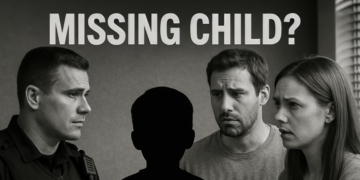In the quiet communities of southern Ohio, an insidious crime lurks beneath the surface: child sex trafficking. Despite the region’s serene appearance, it has become a distressing hub for this modern-day form of slavery.
Child sex trafficking victims are often invisible to the untrained eye, overlooked as mere delinquents instead of the exploited children they truly are. Many factors contribute to this grim reality, including substance abuse, economic hardship, prior abuse or neglect, mental health issues, and domestic violence within families. Let’s break down some specifics.
Gender Breakdown
- Females: Approximately 85% of trafficking victims are female.
- Males: Around 15% of trafficking victims are male.
Methods of Trafficking
Children are often trafficked through various means, including:
- Parents or Family Members: In many cases, trafficking is facilitated by someone the child knows, including parents or family members. This method is particularly insidious because it involves a breach of trust.
- Strangers: Stranger abductions are less common but still occur.
- Online Grooming: Increasingly, traffickers use the internet and social media to lure and manipulate children into trafficking situations.
Prices Paid by Traffickers
The price a trafficker pays for a new person can vary widely based on age and other factors. Generally, younger individuals fetch higher prices in this illegal market:
- Children (under 18): Traffickers might pay between $8,000 to $10,000.
- Young Adults (18-25): Prices range from $4,000 to $8,000.
- Adults (over 25): Prices can be lower, around $2,000 to $4,000.
How a Parent Trafficks Their Own Children
Parents who traffic their own children often do so by coercing, manipulating, or forcing them into exploitative situations. This can include selling the child for sex or labor, often using threats, violence, or emotional manipulation to maintain control. These children may be forced into prostitution, pornography, or other forms of exploitation.
Contributing Factors
Several factors can contribute to a parent’s decision to traffic their own child:
- Substance Abuse: Parents struggling with addiction may traffic their children to obtain drugs or money.
- Economic Hardship: Extreme poverty can drive parents to exploit their children as a means of financial support.
- Prior Abuse or Neglect: Parents who were abused or neglected in their own childhoods are more likely to perpetrate similar behavior.
- Mental Health Issues: Mental illness can impair judgment and lead to exploitative behavior.
- Domestic Violence: Environments of domestic abuse can create situations where trafficking becomes a form of control and manipulation.
Warning Signs a Child is Being Trafficked by a Parent
- Unexplained Absences: Frequent absences from school or other activities without reasonable explanation.
- Signs of Abuse: Physical injuries or signs of sexual abuse, such as bruises, scars, or sexually transmitted infections.
- Changes in Behavior: Sudden changes in behavior, such as withdrawal, depression, or anxiety.
- Lack of Personal Items: Absence of personal identification, money, or personal belongings.
- Fear of Parent: Fearful behavior around the parent, including reluctance to speak or contradict them.
Warning Signs a Parent May be Trafficking Their Child
- Excessive Control: Overly controlling behavior, including monitoring the child’s movements and interactions.
- Isolation: Keeping the child isolated from friends, family, or community activities.
- Substance Abuse: Heavy use of drugs or alcohol by the parent.
- Unusual Transactions: Engaging in suspicious financial transactions or having unexplained sources of income.
- Inappropriate Relationships: Allowing or encouraging inappropriate relationships between the child and adults.
Raising awareness about these warning signs is crucial in combating child sex trafficking. It’s essential for community members, educators, and law enforcement to stay vigilant and proactive in protecting our most vulnerable population from this heinous crime.















































































